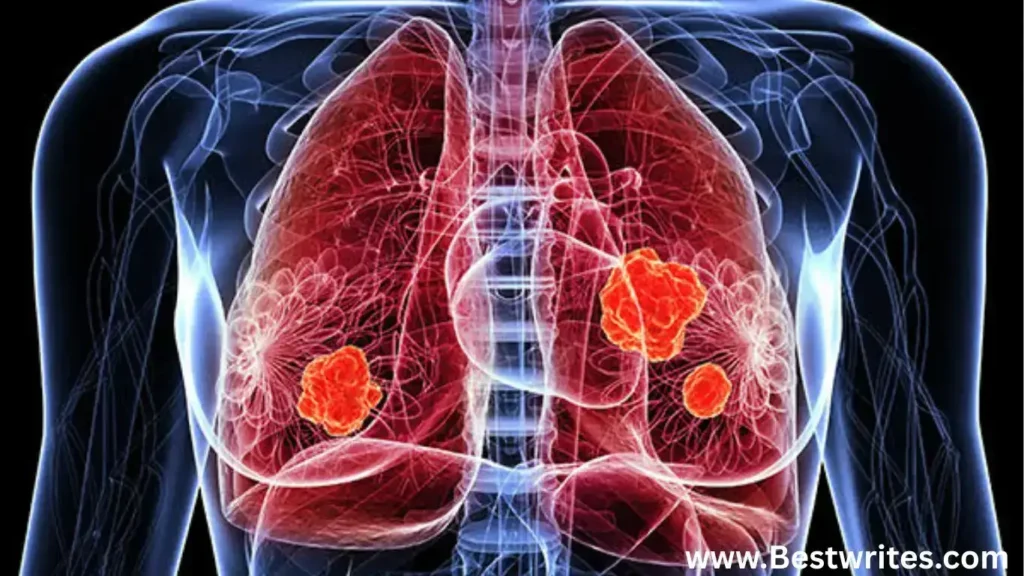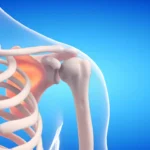The world is changing quickly after the pandemic. New medical research and facilities are being used to find diseases, especially cancer. Early detection is very important for a disease as serious as lung cancer. Patients, providers, and billing professionals all need to know the exact codes, such as the ICD-10 codes for lung cancer screening.
Medical billing and coding are the most important parts of the healthcare system. They make sure that doctors are paid for their work and that patient records accurately show how their health has changed over time. The International Classification of Diseases, Tenth Revision (ICD-10), is a very important part of this complicated system.
Today, this tutorial will talk about lung cancer screening and the ICD-10 codes that go with it. We will explain why they are important and how they are used in modern healthcare. Let’s get going.
Why is it important to screen for lung cancer?
Lung cancer is one of the most frequent malignancies in the US and has a high death rate. The reason for this is because it is often found out too late, when treatment options are less successful. But if the disease is found early by screening, the odds of survival go up a lot.
The U.S. Preventive Services Task Force (USPSTF) says that certain persons should get low-dose computed tomography (LDCT) tests every year to check for lung cancer. This suggestion has made screening programs more important, which means that these services need to be managed with accurate medical coding. The purpose of lung cancer screening is to discover cancer before it makes you feel sick. For people who are at high risk, this preventive approach can save their lives.
How to Understand the ICD-10 System:
The ICD-10 is a system that is used all over the world to group diseases, symptoms, and medical procedures. The World Health Organization (WHO) made it, and healthcare providers use it to code and keep track of patient diagnoses and visits. The system in the United States is called ICD-10-CM (Clinical Modification) for diagnostic coding and ICD-10-PCS (Procedure Coding System) for operations done in the hospital.
Every time a patient comes in, whether it’s for a regular check-up or a complicated surgery, they get one or more ICD-10 codes. These codes do a few important things:
Billing and Reimbursement: They show that the services were medically necessary, which is important for filing insurance claims.
Data Collection and Research: ICD-10 codes are used to keep track of disease rates, public health trends, and clinical research.
Quality Measurement: They assist figure out how well the care is and how well the patients do.
For preventive treatments like lung cancer screening, certain codes show that a patient is being examined for screening and not for symptoms or a proven diagnosis. It is important to use the right ICD-10 code for lung cancer screening so that billing and record-keeping are done correctly.
The Main ICD-10 Code for Lung Cancer Screening is:
A certain group of codes, called Z codes, are used when a patient comes in for a screening test and has no indications or symptoms of the disease. These codes represent “things that affect health status and contact with health services.” They show that the person is not sick or hurt.
The main ICD-10 code for checking for lung cancer is:
Z12.2: Visit for screening for cancer of the respiratory organs.
ICD-10 is the principal code used to record a visit for lung cancer screening. It lets the insurance company know that the appointment was only for a preventative check of the lungs and other breathing organs. This is the diagnosis code that should be used on the claim form when a practitioner orders a low-dose lung cancer screening.
What does “Encounter For” mean?
The term “encounter for” is important in ICD-10 language. It means the main reason why the patient came in. If a patient with a history of smoking comes in just for their yearly lung screening CT scan, Z12.2 is the right primary diagnosis. This is different from when a patient comes in with a cough and chest pain that won’t go away, which would need codes for those specific symptoms. Knowing the right reason for the visit makes sure that medical records are correct and that claims are processed quickly.
Low-Dose CT Scans for Lung Cancer Screening:
The low-dose computed tomography (LDCT) scan is the best way to test for lung cancer and is the one that doctors recommend. A lot of people seek for an ICD-10 code for a lung cancer screening CT because the LDCT is the test that is done. Z12.2 covers the visit for the screening, however the procedure itself is classified separately using the Current Procedural Terminology (CPT) system.
The right CPT code for a CT scan of the lungs with a low dosage is:
71271: Computed tomography of the thorax, low dose for lung cancer screening, without contrast material(s).
The ICD-10 code for low-dose lung cancer screening (Z12.2) needs to be linked to the CPT code (71271) for the claim to be processed successfully. This connection shows that the LDCT was done for a medical reason, which is a screening, to the payer.
What does a low-dose CT scan do?
An LDCT scan is a kind of X-ray that employs a specific scanner to make detailed pictures of the lungs from different angles. The “low-dose” part means that it utilizes up to 90% less ionizing radiation than a regular chest CT scan. This lower exposure to radiation is very important because the screening is done every year on people who are otherwise healthy. The scan doesn’t hurt, doesn’t require any cuts, and usually only takes a few minutes to finish.
Who Can Get a Lung Cancer Screening?
Not everyone needs to have a lung cancer screening every year. The USPSTF has set particular high-risk criteria to make sure that the benefits of screening are greater than the possible hazards, like exposure to radiation and the chance of false positives.
According to the most recent guidelines, adults who meet all of the following requirements should have an LDCT screening once a year:
They are between the ages of 50 and 80.
Have smoked for at least 20 years.
Are either current smokers or have quit smoking in the recent 15 years.
Pack-Year
A “pack-year” is a means to figure out how much a person has smoked over the years. One pack-year is the same as smoking one pack of cigarettes every day for a year. For instance, someone who smoked two packs a day for ten years has a 20-pack-year history.
Providers need to write down these risk factors in the patient’s chart. This paperwork is needed by insurance companies, including Medicare, to pay for the screening.
Secondary ICD-10 codes play a role in lung cancer screening:
The main ICD-10 code for screening for lung cancer is Z12.2. However, supplementary codes are typically needed to give a full picture of the patient’s health and to show that the procedure is medically necessary. These extra codes let the insurance company know what risk factors the patient has.
Popular ICD-10 Codes
The most prevalent secondary codes that go with Z12.2 are those that have to do with smoking:
Z87.891: A history of nicotine dependence in the past. This code is for people who used to smoke. It shows that the patient used to smoke but doesn’t anymore.
F17 Series: Dependence on nicotine. This set of codes is for people who smoke now. The exact code is based on the type of tobacco product and the type of addiction.
F17.210: Nicotine addiction, cigarettes, not too complicated.
F17.211: Nicotine dependency, cigarettes, in remission.
F17.213: Nicotine dependence on cigarettes, with withdrawal.
It is advisable to use these supplementary codes. For instance, a claim for a yearly lung screening for a 65-year-old who used to smoke would be categorized as:
Primary Diagnosis: Z12.2 (Visit for screening for malignant tumor of the respiratory organs)
Secondary Diagnosis: Z87.891 (Personal history of nicotine dependency)
This combination makes it apparent to the payer that the patient is being screened (Z12.2) and that they are at high risk because of their smoking history (Z87.891). This thorough coding lowers the chance of claims being denied. So, the ICD-10 screening for lung cancer is a two-part diagnostic tale.
How to Read Screening Results and Follow-Up Coding:
There are several possible outcomes for an initial LDCT screening scan, and each one needs a particular follow-up action and ICD-10 code.
Result: Negative
It signifies that the lungs don’t have any strange nodules or other problems. If the patient still meets the qualifying criteria, they should keep getting screened every year. The code for the visit the next year would be Z12.2 again.
Finding that is either unclear or suspicious:
LDCT scans often find tiny nodules in the lungs. Most of these nodules are not malignant and are usually caused by previous infections or inflammation. But their presence needs more investigation. The radiologist will use a system like Lung-RADS® (Lung Imaging Reporting and Data System) to put the findings into groups so that follow-up suggestions are the same for everyone.
The code for future visits will change if a nodule is identified. Z12.2 (screening) will no longer be the main diagnosis. The code will instead show the exact finding.
R91.1: A single nodule in the lung. When there is a single, well-defined nodule in the lung, this code is utilized.
R91.8: An aberrant finding in the lung field that isn’t specified. You can use this code for additional aberrant discoveries that need to be watched, including numerous nodules.
If a patient’s screening LDCT shows a tiny nodule and the doctor says they should have a follow-up CT scan in six months, the follow-up scan would be recorded with R91.1 as the main diagnosis, not Z12.2. An ICD-10 code for a repeat CT scan for lung cancer screening would change from a screening diagnosis to a diagnostic one.
FAQ,S
What is the ICD-10 code for checking for cancer?
Z12.- is the standard ICD-10 code for cancer screening.
What is the code for C17.8 in the ICD-10?
The ICD-10 code C17.8 stands for a malignant tumor in the small intestine with patches that overlap. It is used when cancer affects more than one part of the small intestine.
What is the code for Z86.6 in the ICD-10?
The ICD-10 code Z86.6 means that a person has a history of illnesses of the neurological system and sense organs. This symbol shows that the neurological problems have been fixed in the past.
Conclusion
In conclusion, the ICD-10 framework for screening for lung cancer is a very important and accurate instrument in the fight against this devastating illness. The code Z12.2 is very important for keeping track of preventative screening visits, but to fully grasp the procedure, you also need to know about secondary risk-factor codes and the diagnostic codes required for follow-up. By using these codes appropriately, healthcare workers may make sure they get paid properly, add to crucial public health statistics, and, most importantly, help find diseases early enough to save lives.







